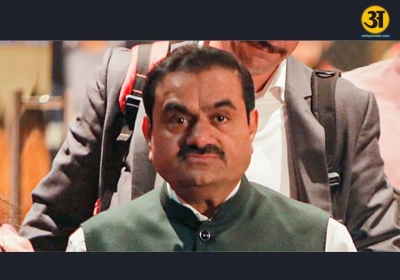
SC orders meeting on bonded labour aid
Supreme Court directs Centre to convene State Meeting on bonded labour assistance
The Supreme Court of India recently addressed the issue of delayed financial assistance to rescued bonded labourers. The court’s concern followed a petition highlighting the delay in providing financial aid to individuals rescued from forced labour. The bench, led by Justices Bhushan R Gavai and KV Viswanathan, expressed alarm at the number of rescued individuals who had not yet received the ₹30,000 compensation under the Central Sector Scheme for Rehabilitation of Bonded Labourers, 2021.
Financial aid delay raises concerns
The case, filed in 2022, was initially sparked by concerns raised by NGOs about the lack of immediate financial assistance to those freed from bonded labour. Lawyer Vanshaja Shukla, representing the National Human Rights Commission (NHRC), presented data showing that only 1,101 out of 5,264 rescued bonded labourers in Uttar Pradesh had received the promised assistance. This left 4,167 individuals without support. The court called the situation alarming, emphasizing that rescued individuals, particularly children, needed financial help immediately to ensure their rehabilitation.
The issue grew more concerning as senior advocate HS Phoolka, representing the Bachpan Bachao Andolan (BBA), intervened in the case. Phoolka noted that over 11,000 children had been rescued from bonded labour between 2017 and March 2024 in 19 states. He added that the problem was particularly severe in states like Maharashtra, Haryana, Rajasthan, Bihar, Uttar Pradesh, and Delhi. The BBA highlighted the difficulty in ensuring that these children, many of whom were trafficked, received the help they needed for their rehabilitation.
ALSO READ: Maharashtra Elections: step-by-step guide to download your Voter Slip online
Supreme Court’s directive
The Supreme Court directed the Union Labour Secretary to hold a meeting with state labour officials to create a clear and uniform process for providing immediate financial assistance to rescued bonded labourers. The court emphasized the need for a standardized procedure across all states to ensure that these individuals were supported quickly and consistently.
The court also directed the Ministry of Labour and Employment to consider creating an online portal similar to the one used for missing children, which could streamline the process of distributing financial aid. The petition had also raised concerns about the complicated process of identifying and rescuing bonded labourers, which often led to delays in providing compensation.
The BBA’s involvement in the case brought attention to the fact that many of the rescued bonded labourers were children. According to the figures presented by the NGO, Delhi had the highest number of rescued children, with over 3,000. Other states with high figures included Rajasthan, Telangana, Gujarat, and Assam. The BBA urged the court to focus on the specific needs of children in bonded labour, as they are particularly vulnerable to exploitation and trafficking.
Inter-State trafficking
One of the key issues highlighted by the petitioners was the problem of inter-state trafficking. Many rescued labourers, especially children, were taken from one state to another, making it harder for authorities to track and assist them. Advocate Abhishek Jebaraj, who represented the petitioner Surendra Manjhi, urged the court to address the problem of trafficking between states and ensure that the financial aid process was quick and effective. He pointed out that rescued labourers who were brought from other states faced additional challenges in receiving compensation.
The Supreme Court’s order to create a uniform formula for the rehabilitation of bonded labourers is expected to address these concerns. The bench also called for the creation of vigilance committees in each district to enforce the Bonded Labour System (Abolition) Act, 1976. These committees would ensure that rescued individuals receive their financial aid without unnecessary delays.
The petitioners highlighted several issues that hindered the timely release of compensation. These included delays in government action, long investigation periods, and bureaucratic red tape that prevented rescued individuals from receiving aid. The petition urged the court to streamline the process of providing financial assistance to ensure that individuals are supported as soon as they are rescued.
The court expressed concern over the prolonged delays and ordered the government to take action within six weeks. It also called for the establishment of a simplified procedure that would allow for the immediate release of financial assistance to those rescued from bonded labour.
Efforts to improve the system
In addition to financial aid, the petition called for better educational support for rescued children to ensure their effective rehabilitation. The court’s decision to involve the NHRC in the consultation process aims to address the procedural issues that currently delay the release of funds. The NHRC will work with the Ministry of Labour and Employment to come up with solutions that make the financial aid process more efficient and effective.
The Supreme Court’s intervention in the case of bonded labourers is a crucial step in ensuring that individuals who have been freed from forced labour receive the necessary support for their rehabilitation. The court’s directive to streamline the financial aid process and address issues like inter-state trafficking and delays in government action is expected to bring positive changes for these vulnerable individuals, especially children. As the government works to implement these changes, the hope is that rescued bonded labourers will receive the assistance they need in a timely manner.





